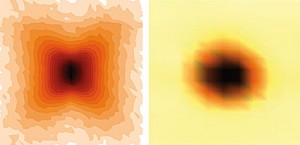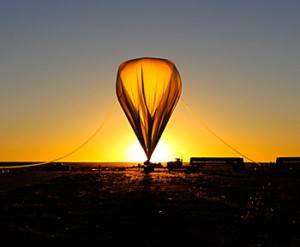Before getting to the competition, collaboration, and budget mentioned in the head for this posting, I’m supplying some background information.
Within the context of a May 20, 2014 ‘National Nanotechnology Initiative’ hearing before the U.S. House of Representatives Subcommittee on Research and Technology, Committee on Science, Space, and Technology, the US General Accountability Office (GAO) presented a 22 pp. précis (PDF; titled: NANOMANUFACTURING AND U.S. COMPETITIVENESS; Challenges and Opportunities) of its 125 pp. (PDF version report titled: Nanomanufacturing: Emergence and Implications for U.S. Competitiveness, the Environment, and Human Health).
Having already commented on the full report itself in a Feb. 10, 2014 posting, I’m pointing you to Dexter Johnson’s May 21, 2014 post on his Nanoclast blog (on the IEEE [Institute of Electrical and Electronics Engineers] website) where he discusses the précis from the perspective of someone who was consulted by the US GAO when they were writing the full report (Note: Links have been removed),
I was interviewed extensively by two GAO economists for the accompanying [full] report “Nanomanufacturing: Emergence and Implications for U.S. Competitiveness, the Environment, and Human Health,” where I shared background information on research I helped compile and write on global government funding of nanotechnology.
…
While I acknowledge that the experts who were consulted for this report are more likely the source for its views than I am, I was pleased to see the report reflect many of my own opinions. Most notable among these is bridging the funding gap in the middle stages of the manufacturing-innovation process, which is placed at the top of the report’s list of challenges.
…
While I am in agreement with much of the report’s findings, it suffers from a fundamental misconception in seeing nanotechnology’s development as a kind of race between countries. [emphases mine]
(I encourage you to read the full text of Dexter’s comments as he offers more than a simple comment about competition.)
Carrying on from this notion of a ‘nanotechnology race’, at least one publication focused on that aspect. From the May 20, 2014 article by Ryan Abbott for CourthouseNews.com,
Nanotech Could Keep U.S. Ahead of China
WASHINGTON (CN) – Four of the nation’s leading nanotechnology scientists told a U.S. House of Representatives panel Tuesday that a little tweaking could go a long way in keeping the United States ahead of China and others in the industry.
The hearing focused on the status of the National Nanotechnology Initiative, a federal program launched in 2001 for the advancement of nanotechnology.
As I noted earlier, the hearing was focused on the National Nanotechnology Initiative (NNI) and all of its efforts. It’s quite intriguing to see what gets emphasized in media reports and, in this case, the dearth of media reports.
I have one more tidbit, the testimony from Lloyd Whitman, Interim Director of the National Nanotechnology Coordination Office and Deputy Director of the Center for Nanoscale Science and Technology, National Institute of Standards and Technology. The testimony is in a May 21, 2014 news item on insurancenewsnet.com,
Testimony by Lloyd Whitman, Interim Director of the National Nanotechnology Coordination Office and Deputy Director of the Center for Nanoscale Science and Technology, National Institute of Standards and Technology
Chairman Bucshon, Ranking Member Lipinski, and Members of the Committee, it is my distinct privilege to be here with you today to discuss nanotechnology and the role of the National Nanotechnology Initiative in promoting its development for the benefit of the United States.
…
Highlights of the National Nanotechnology Initiative
Our current Federal research and development program in nanotechnology is strong. The NNI agencies continue to further the NNI’s goals of (1) advancing nanotechnology R&D, (2) fostering nanotechnology commercialization, (3) developing and maintaining the U.S. workforce and infrastructure, and (4) supporting the responsible and safe development of nanotechnology. …
,,,
The sustained, strategic Federal investment in nanotechnology R&D combined with strong private sector investments in the commercialization of nanotechnology-enabled products has made the United States the global leader in nanotechnology. The most recent (2012) NNAP report analyzed a wide variety of sources and metrics and concluded that “… in large part as a result of the NNI the United States is today… the global leader in this exciting and economically promising field of research and technological development.” n10 A recent report on nanomanufacturing by Congress’s own Government Accountability Office (GAO) arrived at a similar conclusion, again drawing on a wide variety of sources and stakeholder inputs. n11 As discussed in the GAO report, nanomanufacturing and commercialization are key to capturing the value of Federal R&D investments for the benefit of the U.S. economy. The United States leads the world by one important measure of commercial activity in nanotechnology: According to one estimate, n12 U.S. companies invested $4.1 billion in nanotechnology R&D in 2012, far more than investments by companies in any other country. …
There’s cognitive dissonance at work here as Dexter notes in his own way,
… somewhat ironically, the [GAO] report suggests that one of the ways forward is more international cooperation, at least in the development of international standards. And in fact, one of the report’s key sources of information, Mihail Roco, has made it clear that international cooperation in nanotechnology research is the way forward.
It seems to me that much of the testimony and at least some of the anxiety about being left behind can be traced to a decreased 2015 budget allotment for nanotechnology (mentioned here in a March 31, 2014 posting [US National Nanotechnology Initiative’s 2015 budget request shows a decrease of $200M]).
One can also infer a certain anxiety from a recent presentation by Barbara Herr Harthorn, head of UCSB’s [University of California at Santa Barbara) Center for Nanotechnology in Society (CNS). She was at a February 2014 meeting of the Presidential Commission for the Study of Bioethical Issues (mentioned in parts one and two [the more substantive description of the meeting which also features a Canadian academic from the genomics community] of my recent series on “Brains, prostheses, nanotechnology, and human enhancement”). II noted in part five of the series what seems to be a shift towards brain research as a likely beneficiary of the public engagement work accomplished under NNI auspices and, in the case of the Canadian academic, the genomics effort.
The Americans are not the only ones feeling competitive as this tweet from Richard Jones, Pro-Vice Chancellor for Research and Innovation at Sheffield University (UK), physicist, and author of Soft Machines, suggests,
Richard Jones
@RichardALJonesThe UK has fewer than 1% of world patents on graphene, despite it being discovered here, according to the FT – http://www.ft.com/cms/s/0/7d4ce33a-dc56-11e3-9016-00144feabdc0.html …
I recall reading a report a few years back which noted that experts in China were concerned about falling behind internationally in their research efforts. These anxieties are not new, CP Snow’s book and lecture The Two Cultures (1959) also referenced concerns in the UK about scientific progress and being left behind.
Competition/collaboration is an age-old conundrum and about as ancient as anxieties of being left behind. The question now is how are we all going to resolve these issues this time?
ETA May 28, 2014: The American Institute of Physics (AIP) has produced a summary of the May 20, 2014 hearing as part of their FYI: The AIP Bulletin of Science Policy News, May 27, 2014 (no. 93).
ETA Sept. 12, 2014: My first posting about the diminished budget allocation for the US NNI was this March 31, 2014 posting.

![Reining Sliding Stop Mannheim Maimarkt 2007 Date 01.05.2007 Source Own work Author AllX [downloaded from http://en.wikipedia.org/wiki/File:Reining_slidingstop.jpg]](http://www.frogheart.ca/wp-content/uploads/2013/10/Reining_slidingstop-300x199.jpg)
![“Queen Elizabeth II greets employees on her walk from NASA’s Goddard Space Flight Center mission control to a reception in the center’s main auditorium in Greenbelt, Maryland where she was presented with a framed Hubble image by Congressman Steny Hoyer and Senator Barbara Mikulski. Queen Elizabeth II and her husband, Prince Philip, Duke of Edinburgh, visited the NASA Goddard Space Flight Center as one of the last stops on their six-day United States visit.” Credit: NASA/Bill Ingalls [downloaded from http://en.wikipedia.org/wiki/File:Elizabeth_II_greets_NASA_GSFC_employees,_May_8,_2007_edit.jpg]](http://www.frogheart.ca/wp-content/uploads/2013/10/Queen-Elizabeth_II-216x300.jpg)
![Thailand's King Bhumibol Adulyadej waves to well-wishers during a concert at Siriraj hospital in Bangkok on September 29, 2010. Credit: Government of Thailand [downloaded from http://en.wikipedia.org/wiki/File:King_Bhumibol_Adulyadej_2010-9-29.jpg]](http://www.frogheart.ca/wp-content/uploads/2013/10/King-of-Thailand-245x300.jpg)
